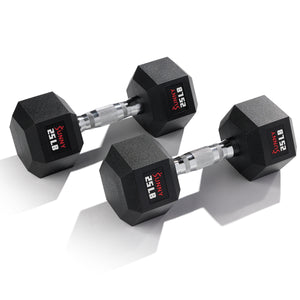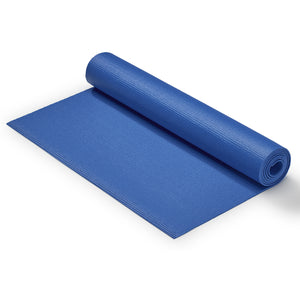Bodyweight workouts for older adults are a great way to get lean and fit. And as you approach middle age and beyond, it can become challenging to stay fit.
So, knowing effective workouts is key to achieving your best shape, as well as your best health. And bodyweight workouts are some of the best workouts to get lean and fit.
And with that, are you wondering what exercises and workouts make the list? Are some of your favorites on the list?
Let's take the first step to get lean and fit as older adults and seniors. Learn how to start bodyweight workouts no matter how old you are!
Getting Lean and Fit for Older Adults & Seniors
It's well documented that being overweight and obese is an epidemic in Western society. As of 2018, a staggering 73.6% of American adults (1) were overweight or obese. And sadly, this number gets worse with each passing decade. And seniors are also heavily touched by this epidemic.
The good news is it does not have to be you! And if you are currently in this category, you can work your way out. It just takes some discipline, effort, and consistency.
And the bodyweight workouts below are tailor-made for middle-aged and older adults. All of these exercises can be done with a very low risk of injury. Also, the exercises can be done with low reps, even for beginners.
Proper Warm-up is More Critical with Age
As you reach middle age and older, proper warm-up becomes exponentially more important. Once you reach the age of 40 through your senior years, you are much more susceptible to workout injuries. However, with a proper and focused warm-up, you can drastically reduce your chances of being injured.
So, take the time to warm up, and remember the timeless adage…
An ounce of prevention is worth a pound of cure!
The key is to always make more time for proper warm-up as you get older:
- Do 2 minutes of light cardio to warm your muscles and get your blood flowing. Good examples of this are a brisk walk, or jogging lightly in place.
- Do dynamic stretching for 2 minutes. This can include arm swings, leg swings, neck rolls, torso rotations, waist bends (forward and backward), and more. Always in a controlled and deliberate motion.
Senior Bodyweight Workouts to Get Lean and Fit
Let's dive into these powerhouse exercises for older adults.
The great thing about bodyweight workouts is that they don't require gym equipment. Even better, you can complete senior bodyweight workouts anywhere and anytime. So you choose the schedule. And click to visit our friends at A Lean Life for more bodyweight workouts.
And it's always best to do these workouts in order from largest muscle group to smallest muscle group. The larger muscle groups require more energy to perform, so do these first when you're at max energy levels. Otherwise, your form and repetitions will suffer.
1) Bodyweight Squats

Bodyweight squats are a great exercise to strengthen and build your legs. They primarily work your upper leg muscles but are also an excellent full-body workout. And they also add a bit of cardio to the routine, so these are a great overall exercise.
Muscles Worked:
- Legs
- Full body
2) Push Ups

Push ups are the single best bodyweight workout. They work a wide range of muscles groups, including:
- Chest (pecs)
- Shoulders
- Triceps
- Abs
- Core
As you get older, it's natural that you will lose some strength. We all do, and it's one of those facts of life. So if you can't do one push up, that's OK! Doing incline push-ups will make the resistance easier, and you'll still get a great workout.
And the more elevated your incline push up (upper body higher and higher than your feet), the easier the resistance becomes.
You can also do push-ups from your knees, which reduces the resistance.
3) Superman Exercise

The superman exercise is a simple back exercise and helps to strengthen your core and back. So, it's a great exercise to improve mobility and help you with activities in your daily life.
Muscles Worked:
- Lower back
- Upper back
- Shoulders
- Abs
- Glutes
Performing the Superman Exercise:
- Lie on the floor on your stomach in the prone position.
- Extend your arms and legs straight out, with your arms reaching directly in front of you and your legs positioned to the rear. Like you are about to fly like Superman!
- Your head should be in a neutral position looking at the floor (looking down and not up).
- Lift your arms and legs simultaneously off the ground 6-12 inches, and hold the position for 3 seconds. Make sure the motion is controlled and deliberate, and maintain your breathing.
- Lower your arms and legs, returning to the start position.
- This is one rep (or repetition).
Safety Note: If you are dealing with a lower back injury, always first consult your personal physician regarding your fitness and wellness plan!
4) Leg Lifts

Leg Lifts work your abs with a primary focus on your lower abs but are a great overall ab exercise. And they also work your entire core.
- Abdominals
- Entire Core
Pro Tip: Ab exercises that move your upper body (crunches, sit-ups), work your upper abs. Ab exercises that move your lower body (leg lifts, frog kicks, hanging leg raises) work your lower abs.
5) Planks

Planks work your entire core and are a good variation exercise for your midsection.
They are a simple exercise to perform, and the key is to keep your body properly aligned and stable in the up position. They work:
- Core
- Abs
6) Knee-to-Chest Stretch

This is not as much an exercise for building muscle or getting lean as it is for improving lower back health.
With the knee-to-chest stretch, you will work:
- Lower Back
- Hip Muscles
As you get older, the chance of a lower back injury increases substantially. This is especially true during workouts.
With the knee-to-chest stretch, you will strengthen your lower back muscles and improve flexibility. And this will strengthen and fortify your entire lower back area, greatly reducing your chance of injury.
Performing the Knee-To-Chest Stretch:
- Lie flat on your back with your legs fully bent and your feet on the floor.
- Slowly raise one leg at a time, and as you raise each one, place your hands on your shin and pull it to you.
- Pull your right leg, then pull your left leg until you have both legs pulled as close to your chest as you comfortably can.
- Pull your legs towards your upper body, but not to a point where it is painful. The entire motion should be comfortable and controlled.
- Hold the stretch for 5-10 seconds, then return one leg and then the other to the start position.
Safety Note: If you are dealing with a lower back injury, always first consult your personal physician regarding your fitness and wellness plan!
7) Calf Raises

Calf raises are a simple bodyweight exercise that will build and strengthen your calf muscles. This will improve your mobility and strengthen your lower legs.
From a standing position with your feet at shoulder width, raise your body up until you are on your tippy-toes. Hold for 2 seconds, and return to the start position.
Bodyweight Workout Plan | Staying Fit Safely While Aging
The following is a simple workout that you can perform in 20 minutes. And if you do this workout two times each week, it can have a big impact on your fitness level.
Exercise - Reps
Bodyweight Squats - 5 to 10 Reps
Push ups - 5 to 15 Reps
Superman Exercise - 3 to 5 Reps
Leg Lifts - 5 to 15 Reps
Planks - 10-20 seconds
Knee-to-Chest Stretch - 3-5 Reps
Calf Raises - 5 to 10
Workout Notes:
- The repetitions are only guidelines and are dependent on your fitness level. Always start very slowly and progress.
- Rest 30-60 seconds between exercises.
- The workout above is considered one cycle. Depending on your fitness level, you can perform one to two cycles.
- If you do multiple cycles, rest two to three minutes between cycles.
- Perform this workout two times a week, and that is all you need to work your muscles and get a great resistance workout properly.
Senior & Middle-Age Bodyweight Workouts as You Get Older
Bodyweight workouts are a form of resistance training and are key to building lean muscle. This becomes much more important as you age for two reasons:
- For each decade after the age of 40, you lost 3-5% muscle mass each decade. This is called sarcopenia, and is part of the aging process. The best defense against sarcopenia is doing resistance training. This means putting your muscles under pressure or resistance, like bodyweight workouts or weightlifting.
- As you get older, you also lose bone density. The best defense against losing bone density is resistance training as well (lifting weights or bodyweight workouts).
Importance of Elderly and Senior Cardio
Cardio offers numerous health benefits for both the young and old.
First, as you get older, it becomes more difficult to maintain a lean physique. So for most adults middle-aged and through senior years, doing cardio 4 to 5 times a week is key to getting and staying lean.
And it also provides many other health benefits, like improving your blood pressure and lung health.
Types of Cardio for Seniors
Cardio does not need to be intense or exhausting.
All cardio is beneficial, and here are some great cardio exercises for older adults:
- Brisk Walk
- Biking
- Swimming
- Jogging
- Rowing Machine
- Treadmill - Jog or Walk
- Elliptical Machine
Summing It Up
Bodyweight workouts for the elderly and older adults are a great way to achieve the following:
- Improved fitness level
- Increased muscle mass
- Improved bone density
- Improved flexibility
- Increased strength
- Have more energy
- Improve your overall health
- Feel and look better
So always start slow, but perform bodyweight workouts a few days a week and watch your fitness level soar.
Within two to three months, you might just find that you're the best new version of yourself and feeling younger!
1. “FastStats - Overweight Prevalence.” Centers for Disease Control and Prevention, 5 Jan. 2023, www.cdc.gov/nchs/fastats/obesity-overweight.htm. Accessed 7 June 2023.


A diet and fitness enthusiast, David Williams is the founder of www.aleanlife.com. He is an ex-Army Airborne Ranger and Infantry soldier with decades of fitness and wellness experience. A West Point graduate with a degree in engineering, he focuses on technical research related to fitness, nutrition, and wellness.
























Add Your Name & Email
Please enter your name and email to continue.We won’t display your email publicly.
2 comments
Great article. I’m 65 and that article will be shared with my family. I definitely want to stay healthy for my family
Could you give some stretches and workouts for seniors that can’t get on floor or have range of motion with knees